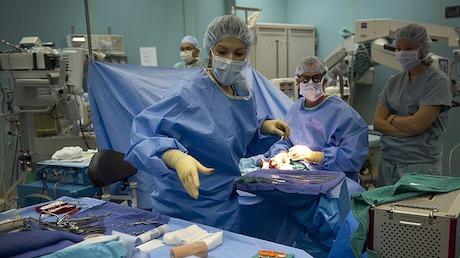Oral health is a significant public health issue in Australia and yet it is often neglected in government health-related polices.
The latest edition of Australia’s Health Expenditure (2012/13) shows total spending on dental services in Australia in 2012/13 was $8,706 million up from $8,477 million in 2011/12.
The Consultation Draft National Oral Health Plan 2015-2024 reports that previous reductions in tooth decay have started to increase again, likely due to increased consumption of sugary food and drinks and the increased consumption of non‐fluoridated bottled water. It also reports that some groups are at greater risk of poor oral health including Aboriginal and Torres Strait Islander people, children from low socioeconomic areas, adults who are socially disadvantaged, and people in regional and remote areas.
With the benefit of Australian and international research, we know what makes a difference for oral health. Government policies need to commit to investment in health promotion to reduce the need for dental treatment and the escalating healthcare burden on the budget.
The underlying influences on health are social factors and life circumstances such as income and income distribution, secure housing, food security, social inclusion, education and employment. These are known as the social determinants of health and have been demonstrated internationally to be critical influences on health and wellbeing. Investing in these social determinants of health will contribute to improved oral and general health.
Healthy lifestyles also help to prevent the development of poor oral health. The principles for oral health promotion are consistent with what is required for maintenance of general health.
- Eat Well calls for a mindfulness about what we put in our mouths. Foods high in sugar and substances like tobacco contribute to poor oral health.
- Drink Well similarly reminds us that drinks with sugar content contribute to tooth decay. Alternatively drinking mostly fluoridated water and milk will contribute to good oral health.
- Clean Well calls for twice daily toothbrushing with fluoride toothpaste and is consistent with the need to take care of our bodies in general health, for example through regular exercise.
- Stay Well refers to the need to seek professional advice and treatment when problems arise.
While all of these measures relate to individual behaviours, they are more likely to be adopted if government policies create supportive environments that promote healthy food above unhealthy food, maintain the quality of fluoridated water supplies, and ensure equitable, affordable and timely access to public dental health services.
Equitable access includes consideration of cultural and linguistic barriers. Recent research conducted by the University of Melbourne has demonstrated the importance of extending services into the community to reach families with a migrant background who may be unaware of the importance and the availability of services, particularly for children.
The Australian Health Promotion Association has published an analysis of the health promotion credentials of the main political parties in the Victorian election. They comment that:
“The Liberals and Nationals have shown a commitment to support preventative health and have committed to expand the Healthy Together Victoria model … [However] Their general focus seems to be on treatment of health conditions without regard for the determinants of ill health.”
“The Labor Party shows little awareness of health promotion in its policy statements. In general their policies on education, families, jobs and transport show an awareness of primary prevention and a measured commitment to the determinants of health. Where they are lacking is an explicit commitment to prevention within their policies.”
“The Greens show the greatest awareness of population health and prevention in their policy statements. We note that the vast majority of their policy positions around health relate to prevention over cure. Other policy areas have a strong equity lens applied.”
The Labor Party has the most developed policy relating to oral health. This is focussed on ensuring access to public dental health services primarily through community health and school dental programs. They also plan to expand the water fluoridation program to areas of Victoria currently without fluoridated water supplies.
The Liberal Party have committed to investing in dental care for residents of country aged care facilities and through the Royal Flying Doctor Service.
And the Greens health policy commits to “Increasing concession cardholders' access to public dental care and targeted initiatives to increase access to dental services for high-risk groups.” The Australian Greens Party also promote Denticare – inclusion of dental services in Medicare. Similarly, the National Liberal and Labor parties mention dental care packages as part of their plans to improve health outcomes.
Regardless of who wins the State election we need to see an investment in oral health promotion and equitable access to dental services. Without it, we will see increased risk for potentially vulnerable groups, increased severity of dental conditions, corresponding impacts on general health, and escalating health care costs.
Associate Professor Lisa Gibbs is Deputy Director of the Jack Brockhoff Child Health and Wellbeing Program at the University of Melbourne. She leads a range of large, community-based child and family health studies exploring sociocultural and environmental influences on health and wellbeing. This includes studies addressing obesity prevention, social inclusion, oral health and disaster recovery. Her research focuses on engagement of marginalised or disadvantaged groups with an emphasis on community and policy outcomes achieved through University-community-government partnerships.





